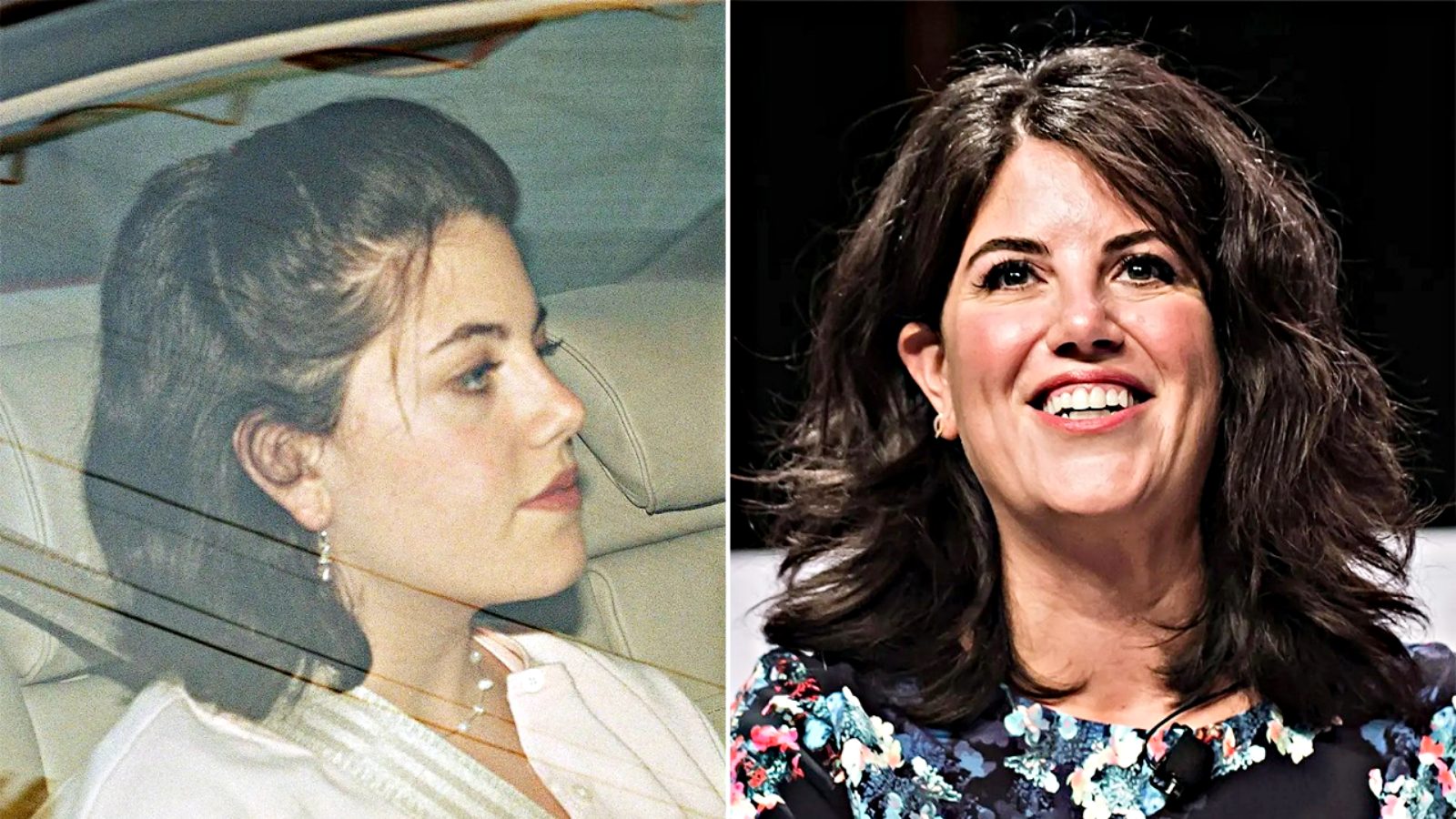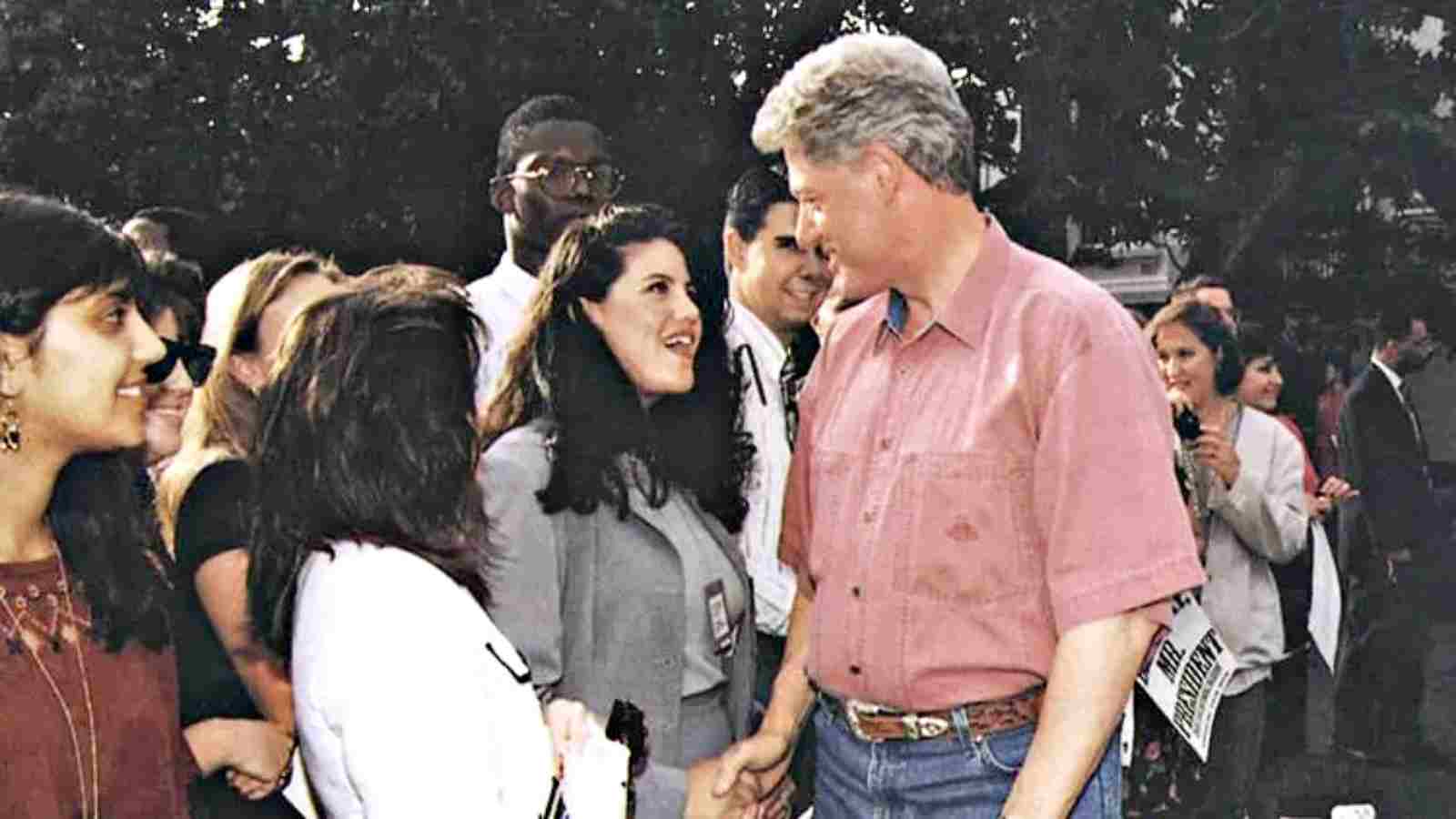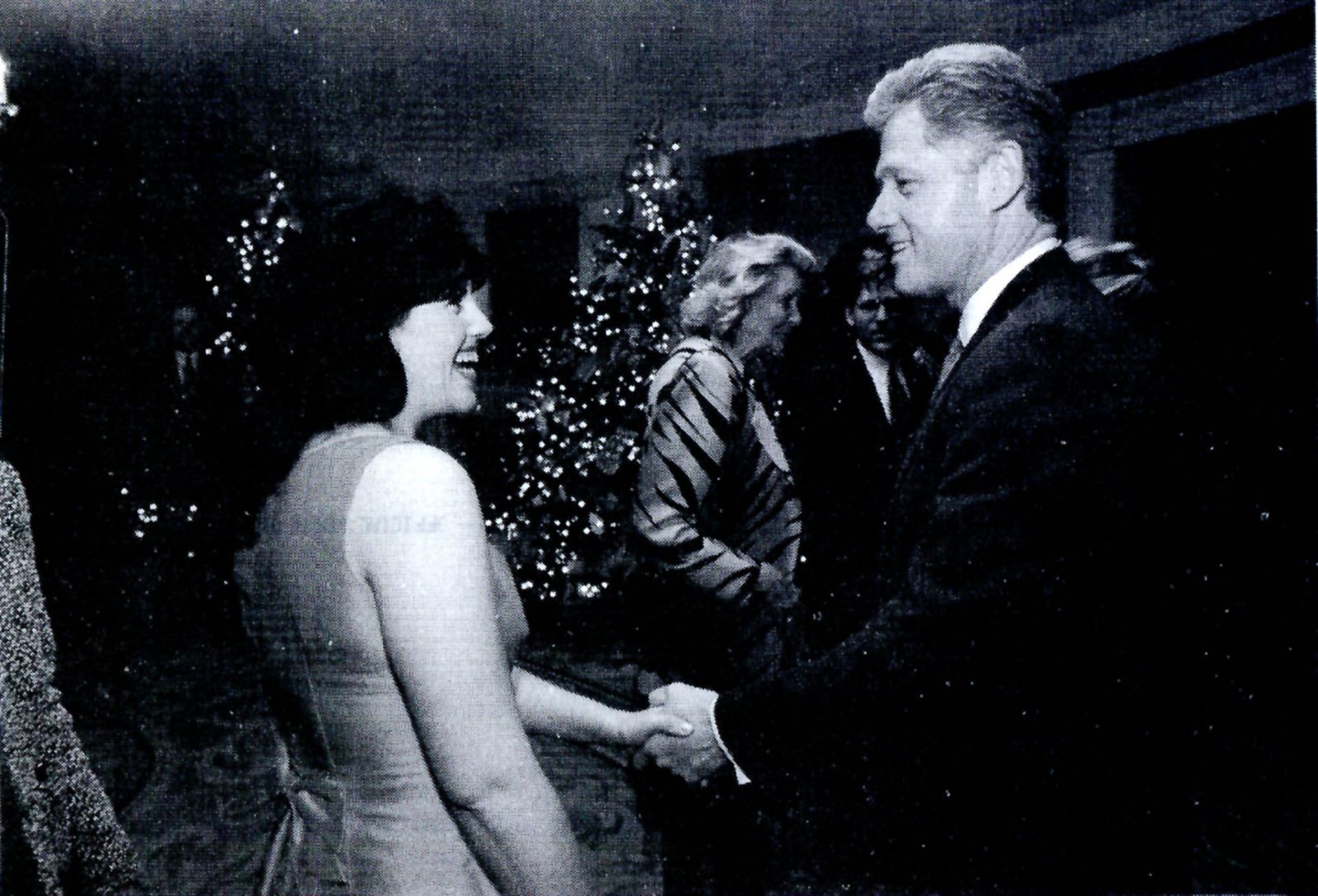The Clinton-Lewinsky Scandal: Unraveling The Dates That Shook A Nation
Table of Contents
- The Protagonists: Bill Clinton and Monica Lewinsky
- The Genesis of the Affair: The First Clinton Lewinsky Scandal Date
- The Unraveling: Whispers Turn to Roars (1997-1998)
- The Denials and the Public Eye
- The Legal Ramifications: Starr's Investigation and Subpoenas
- The Confession and Apologies
- Impeachment Proceedings: A Nation Divided
- The Aftermath and Legacy
The Protagonists: Bill Clinton and Monica Lewinsky
At the heart of the scandal were two individuals from vastly different walks of life, whose paths converged in the most unlikely of settings: the White House. Understanding who they were at the time provides crucial context for the events that unfolded.Bill Clinton: A Brief Biography
William Jefferson Clinton, born in Hope, Arkansas, rose from humble beginnings to become the 42nd President of the United States. A Rhodes Scholar and a Yale Law School graduate, Clinton was known for his charisma, intellect, and political acumen. Before his presidency, he served as the Attorney General and then as the Governor of Arkansas. Elected to the presidency in 1992, he was in his second term when the scandal erupted, a period marked by economic prosperity and significant legislative achievements. At the time the relationship began, he was 49 years old, holding the highest office in the land. | Detail | Information | | :-------------- | :---------------------------------------------- | | **Full Name** | William Jefferson Clinton | | **Birth Date** | August 19, 1946 | | **Role (1995)** | 42nd President of the United States | | **Age (1995)** | 49 years old | | **Key Aspects** | Charismatic, skilled politician, Rhodes Scholar |Monica Lewinsky: From Intern to International Figure
Monica Samille Lewinsky, born in San Francisco, California, became a household name due to her involvement in the scandal. A graduate of Lewis & Clark College, she began her journey in Washington D.C. as an unpaid intern at the White House in 1995, eventually moving to a paid position in the White House Office of Legislative Affairs. Young and ambitious, she was just 22 years old when her sexual relationship with President Clinton began. Her life, once private, was thrust into an unprecedented public spotlight, forever changing her trajectory and making her a central figure in one of the most scrutinized political events of the 20th century. | Detail | Information | | :-------------- | :-------------------------------------------- | | **Full Name** | Monica Samille Lewinsky | | **Birth Date** | July 23, 1973 | | **Role (1995)** | White House Intern, then paid staff | | **Age (1995)** | 22 years old | | **Key Aspects** | Young, ambitious, became a global figure |The Genesis of the Affair: The First Clinton Lewinsky Scandal Date
The timeline of the Clinton-Lewinsky affair is crucial to understanding its progression and impact. The relationship, which would later become the subject of intense public and legal scrutiny, did not begin abruptly but developed over a period. **Their sexual relationship began in 1995—when Clinton was 49 years old and Lewinsky was 22 years old—and lasted 18 months, ending in 1997.** This period, from the mid-1990s, set the stage for the dramatic events that would follow. Specifically, **in 1995, the two began a sexual relationship that continued sporadically until 1997.** This initial **clinton lewinsky scandal date** marks the quiet, hidden start of an affair that would eventually shake the foundations of American politics. Monica Lewinsky herself later detailed the frequency and nature of their encounters. **Lewinsky said that she had sex with Bill Clinton nine times from November 1995 to March 1997.** These interactions, primarily involving oral sex, occurred within the confines of the White House, often in the Oval Office area, highlighting the proximity and access Lewinsky had as a White House employee. **Lewinsky engaged in oral sex with Clinton several times,** a detail that would become a significant point of contention and a focal point of the subsequent investigation. The secretive nature of these early encounters meant that for nearly two years, the relationship remained hidden, known only to those directly involved and a very select few.The Unraveling: Whispers Turn to Roars (1997-1998)
While the affair began in 1995, it remained a secret until late 1997 and early 1998, when a series of events led to its explosive public revelation. The unraveling began subtly, with Monica Lewinsky's transfer from the White House. **During that time, Lewinsky was transferred to a job at the Pentagon, where she confided in coworker Linda Tripp about her affair with the President.** This act of confiding, seemingly innocent at first, proved to be the critical turning point. Linda Tripp, unbeknownst to Lewinsky, began secretly recording their conversations, creating a trove of evidence that would later become central to the scandal. The transition **from an anonymous tip to an impeachment** was swift and dramatic. The information about the alleged affair, bolstered by Tripp's recordings, found its way to independent counsel Kenneth Starr's investigation, which was initially focused on the Whitewater real estate investments and other matters involving President Clinton. The true public eruption of the scandal has a very specific **clinton lewinsky scandal date**: **In January 1998, news broke that President Clinton had engaged in an affair with a White House intern, Monica Lewinsky.** This revelation, hitting headlines on **January 21, 1998**, marked the moment the private affair became a national obsession. **Even at the time, the scandal involving Bill Clinton’s illicit relationship with Monica S. Lewinsky, which broke publicly on this day 20 years ago—January 21, 1998,** instantly dominated news cycles. **This story was political dynamite, not just because it was a sex scandal, but also because it had dire legal implications.** The allegations of an affair were compounded by suspicions that President Clinton might have committed perjury and obstructed justice in relation to a separate sexual harassment lawsuit filed by Paula Jones. **Several news organizations report the alleged sexual relationship between Lewinsky and Clinton,** fueling a media frenzy unlike anything seen before. The "Timeline for White House sex scandal here is a chronology of the key events in the White House sex scandal" became a daily feature in newspapers and on television, as the nation watched in disbelief.The Denials and the Public Eye
In the immediate aftermath of the news breaking, President Clinton and his administration adopted a strategy of categorical denial, a stance that would later prove unsustainable. The public was gripped by the unfolding drama, watching every statement and reaction. **Clinton denies the allegations as the scandal erupts.** Faced with the sensational claims, the President initially maintained a firm and unwavering denial. His most famous declaration came on **January 26, 1998**, a pivotal **clinton lewinsky scandal date** in the public narrative. **After rumors of the scandal reached the news, Clinton publicly said, 'I did not have sexual relations with that woman, Miss Lewinsky.'** This statement, delivered with conviction, aimed to quell the storm and reassure the American public. **On 26 January this year, Mr Clinton categorically denied having sexual relations with Miss Lewinsky.** The denials were not limited to the President himself. His wife, then-First Lady Hillary Clinton, also publicly defended him. **Hillary Clinton defends her husband,** famously attributing the allegations to a "vast right-wing conspiracy." The administration worked to dismiss the claims as politically motivated attacks. Despite the denials, the media continued to pursue the story relentlessly. The international media frenzy intensified, with every detail scrutinized. **'These allegations are false,' says Clinton,** a refrain repeated in various forms as the pressure mounted. The news cycle was dominated by the scandal, with updates provided almost hourly. **Friday, February 6, 1998 published at 12:12 GMT timeline,** indicates the intense, real-time reporting that characterized this period, as the world waited for the next development in the unfolding saga. The question of whether President Clinton had an affair with Monica Lewinsky and lied about it under oath became the defining query of the moment.The Legal Ramifications: Starr's Investigation and Subpoenas
The Clinton-Lewinsky scandal quickly transcended mere gossip, morphing into a serious legal crisis due to the involvement of Independent Counsel Kenneth Starr. Starr's investigation, initially focused on other matters, expanded dramatically to include the allegations surrounding Monica Lewinsky, leading to an unprecedented legal showdown. The legal machinery began to grind into action. **Under pressure, President Clinton asks that a special prosecutor be** appointed, a move that ironically led to the expansion of Kenneth Starr's existing mandate. Starr, already investigating the Whitewater controversy, was now given the authority to investigate whether President Clinton had committed perjury or obstructed justice in relation to the Lewinsky affair and the Paula Jones lawsuit. The investigation rapidly escalated, marked by a flurry of legal actions. **Starr issues subpoenas for a number** of individuals who might have knowledge of the affair. These subpoenas extended beyond Lewinsky herself, targeting her confidante Linda Tripp, White House aides, and even Secret Service agents. **Starr issues subpoenas for a number of people, as well as for White House** documents and records, seeking to build a comprehensive case. The sheer scope of the subpoenas indicated the seriousness with which Starr's office pursued the allegations. A critical legal development that predated the Lewinsky scandal but became intertwined with it was the Supreme Court's ruling regarding the Paula Jones lawsuit. **The Supreme Court rules Jones can pursue her lawsuit while the president is in office,** overturning a lower court's decision. This ruling meant that a sitting president could be subjected to civil litigation, creating a legal vulnerability that the Lewinsky revelations exploited. It was during a deposition in the Paula Jones case that President Clinton famously denied the affair under oath, a denial that would later form the basis of perjury charges. As the investigation intensified, **Monica Lewinsky named on a list of potential** witnesses, a clear indication that her testimony was deemed crucial. The legal battle was not just about the affair itself, but about the President's conduct under oath, raising profound questions about accountability and the rule of law at the highest levels of government.The Confession and Apologies
After months of steadfast denial, the weight of mounting evidence and public pressure eventually led President Clinton to a pivotal moment: his admission of the inappropriate relationship. This shift from denial to confession marked another significant **clinton lewinsky scandal date** in the public's perception of the crisis. **The president's confession follows months of denial.** For nearly seven months after the scandal broke publicly in January 1998, President Clinton maintained his "I did not have sexual relations with that woman" stance. However, the accumulation of evidence, including Monica Lewinsky's own testimony and the infamous "blue dress," made continued denial untenable. On **August 17, 1998**, President Clinton appeared before a grand jury, where he finally admitted to an "improper physical relationship" with Lewinsky. Later that evening, he addressed the nation in a televised speech from the White House. **Appearing serious and contrite, Mr Clinton told the American people, 'I misled people, including my wife.'** This admission, while carefully worded, was a profound moment of reckoning for the President and the nation. **But months later, Clinton admitted his relationship with Lewinsky was wrong and not appropriate.** The President's apologies were not a one-time event. **Reacting to remarks from Democrat Senator Joe Lieberman, President Clinton apologises for his affair with Monica Lewinsky for the first time** publicly in a more direct manner. Senator Lieberman had delivered a speech on the Senate floor condemning the President's actions, which prompted Clinton's initial public expression of regret. The apologies culminated in a more formal and televised address. **'I'm sorry' Kenneth Starr sends 36 boxes of evidence on the Lewinsky scandal to the Congress, as President Clinton apologises for a second time, this time on national television.** This second, more public apology came as the impeachment process gained momentum, with Starr's detailed report, containing extensive evidence of the affair and potential perjury, being sent to Capitol Hill. The apologies, while a necessary step, came too late to prevent the political and legal storm that had already gathered.Impeachment Proceedings: A Nation Divided
The revelations and subsequent admissions by President Clinton set in motion the gravest constitutional process a president can face: impeachment. The events of the Clinton-Lewinsky scandal led directly to only the second presidential impeachment trial in U.S. history at that time, deeply dividing the nation. The context of presidential impeachment is rare in American history. **Just four presidents have faced impeachment charges in U.S. History—Andrew Johnson in 1868 surrounding the firing of a cabinet member,** Richard Nixon (who resigned before impeachment articles could be voted on by the full House), Bill Clinton, and later, Donald Trump. Clinton's impeachment was unique in that it stemmed from a personal scandal, rather than directly from policy or governance issues, though the charges revolved around his conduct under oath. Following President Clinton's admission and the submission of Kenneth Starr's comprehensive report to Congress, the House of Representatives began impeachment proceedings. **Kenneth Starr sends 36 boxes of evidence on the Lewinsky scandal to the Congress,** a massive collection of documents, transcripts, and recordings detailing the affair and the President's alleged perjury and obstruction of justice. This voluminous report served as the basis for the articles of impeachment. On December 19, 1998, the House of Representatives voted to impeach President Clinton on two counts: perjury and obstruction of justice. The charges specifically related to his testimony in the Paula Jones lawsuit and his actions concerning Monica Lewinsky. The impeachment then moved to the Senate for a trial. The Senate trial began in January 1999. It was a highly partisan affair, with Democrats largely defending the President and Republicans pushing for his removal from office. The proceedings captivated the nation, with daily broadcasts and intense debate. Ultimately, on February 12, 1999, the Senate voted on the articles of impeachment. President Clinton was acquitted on both counts, as neither charge garnered the two-thirds majority required for conviction. Despite the acquittal, the impeachment process left an indelible mark on Clinton's legacy and on the political landscape of the United States, highlighting the profound constitutional implications of the **clinton lewinsky scandal date** points.The Aftermath and Legacy
The Clinton-Lewinsky scandal, while officially concluding with President Clinton's acquittal in 1999, left an enduring legacy that continues to resonate in American politics, media, and popular culture. Its impact stretched far beyond the confines of the White House, influencing everything from journalistic ethics to the public perception of personal conduct in public office. For President Clinton, the scandal cast a shadow over his second term, but he managed to complete his presidency with high approval ratings, a testament to the nation's economic prosperity during his tenure. However, the impeachment process forever became a part of his historical narrative. His ability to navigate such a severe crisis and remain in office became a subject of political analysis for years to come. Monica Lewinsky's life was irrevocably altered. Thrust into an unwanted global spotlight, she faced immense public scrutiny and ridicule. For years, she struggled with the notoriety, but in recent times, she has reclaimed her narrative, becoming an advocate against cyberbullying and for a more empathetic public discourse. The miniseries **'American Crime Story' chronicles Monica Lewinsky and Bill Clinton's relationship from its start in 1995 to conclusion in 1997,** reflecting the continued cultural fascination and re-examination of the events. The show, which premiered on **May 4, 2018, at 12:00 pm EDT**, brought the story to a new generation, offering a nuanced look at the human toll of the scandal. The scandal also had a profound effect on the media landscape. It marked a period of intense, often sensationalized, 24/7 news coverage, foreshadowing the age of digital media and the blurring lines between news and entertainment. The ethical debates surrounding the reporting of private lives of public figures were, and still are, heavily influenced by this event. Furthermore, the **clinton lewinsky scandal date** points became a reference for future political controversies, shaping how allegations of misconduct are handled and how public figures respond. It underscored the power of independent counsel investigations and the complexities of legal and political accountability. The scandal served as a stark reminder of the fragility of public trust and the immense pressure that comes with holding the highest office in the land. Its lessons continue to be debated and analyzed, ensuring its place as a pivotal, albeit controversial, chapter in American history.Conclusion
The Clinton-Lewinsky scandal was more than just a sensational news story; it was a constitutional crisis that tested the resilience of American democracy and redefined the boundaries of public and private life for political figures. From the quiet beginnings of the relationship in **1995** to its explosive public revelation on **January 21, 1998**, and the subsequent impeachment trial that culminated in President Clinton's acquittal in **February 1999**, each **clinton lewinsky scandal date** marked a crucial turn in a narrative that captivated and divided a nation. We've traced the journey from clandestine meetings and whispered confidences to public denials, legal battles, and ultimately, a presidential apology and an impeachment trial. The roles of key figures like Bill Clinton, Monica Lewinsky, and Kenneth Starr were central to this unfolding drama, shaping its trajectory and its lasting impact. The scandal illuminated the complexities of power, accountability, and the relentless scrutiny faced by those in the public eye. Understanding this pivotal period is crucial for anyone interested in American political history, media ethics, and the evolution of public discourse. The echoes of the Clinton-Lewinsky affair continue to resonate, influencing how we perceive leadership, privacy, and the delicate balance between personal conduct and public duty. What are your thoughts on how this pivotal moment shaped American politics and society? Share your perspective in the comments below, or explore our other articles on historical political events to deepen your understanding of the forces that have shaped our world.
What Was The Bill Clinton-Monica Lewinsky Scandal?

What Was The Bill Clinton-Monica Lewinsky Scandal?

Remembering the Monica Lewinsky Scandal in Pictures Photos | Image #2